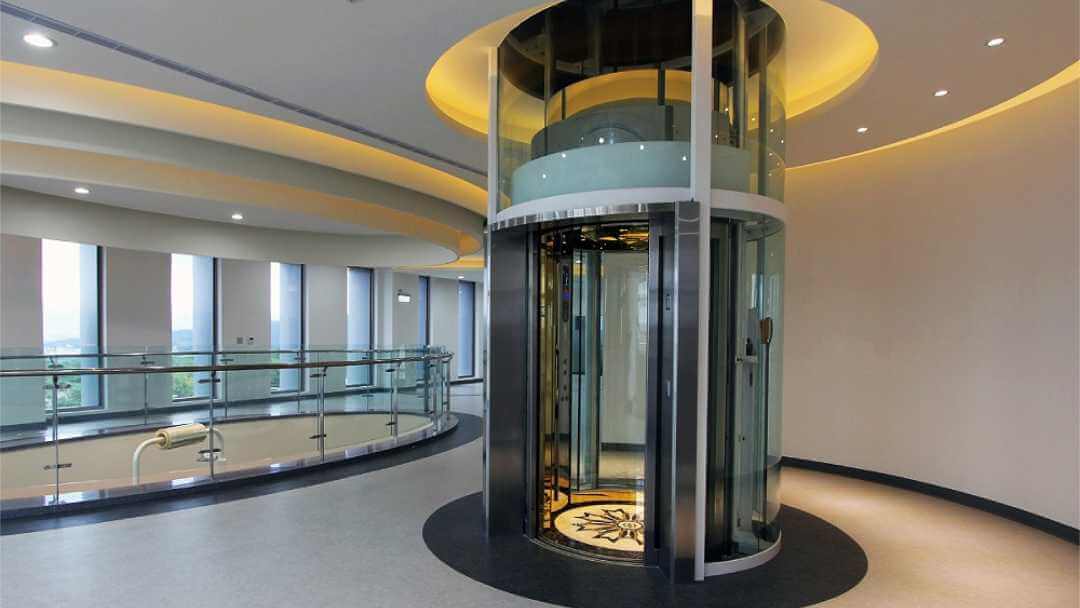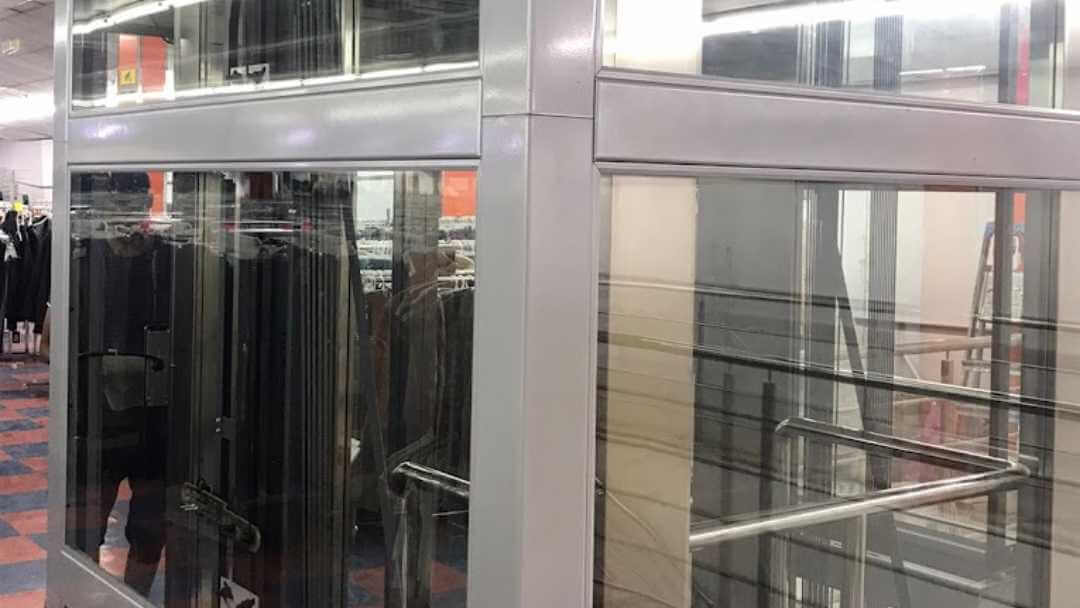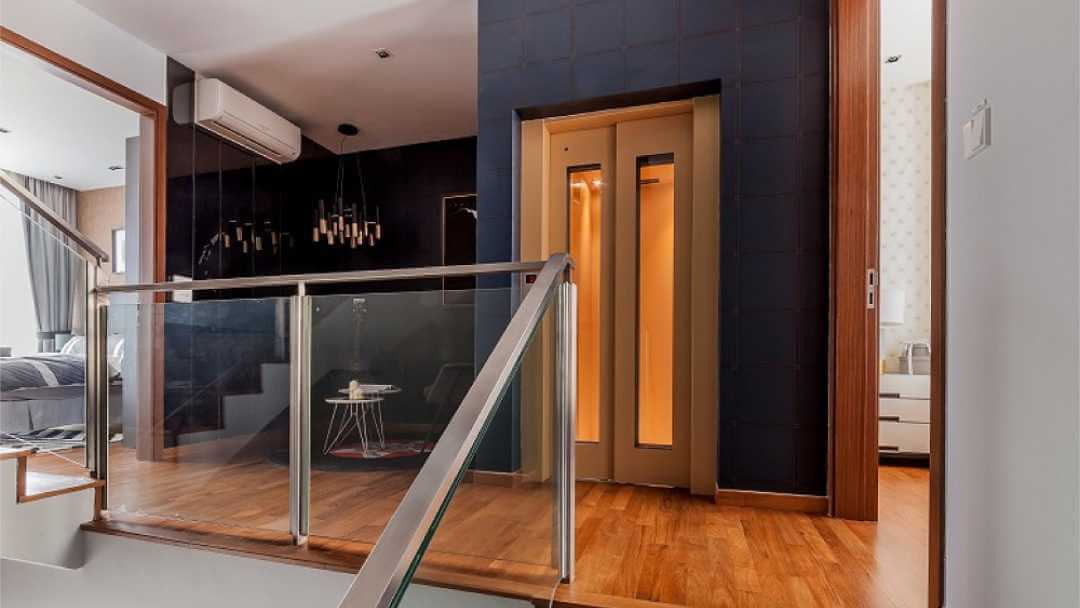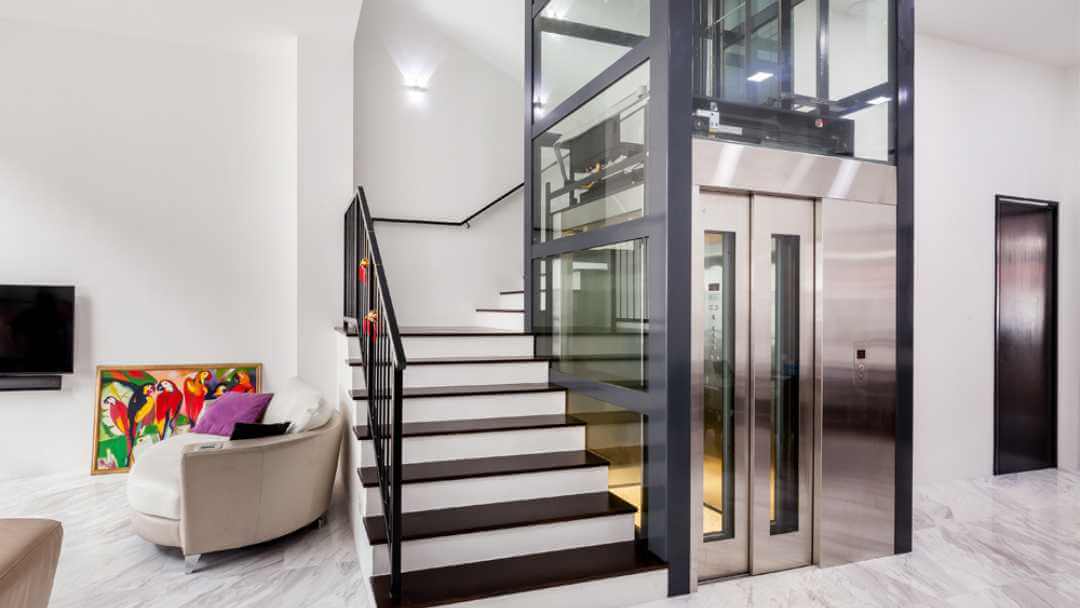The Hydraulic Passenger Lifts Price, Details, Manufacturers, Types, and More: An Ultimate Guide
Looking to install a hydraulic passenger lift but not sure where to start?
Explore our ultimate guide covering passenger lifts – from types and pricing to unique features.
Get a comprehensive overview of Royal Fuji hydraulic passenger lifts.

Muneer Ahammed | Updated February 07, 2024
Hydraulic Passenger elevators are powered by hydraulic systems that use fluid pressure to raise and lower the lift carriage. They are ideal for both residential and commercial properties, offering a safe, reliable, and efficient mode of transportation.
In this comprehensive guide, we will delve into the world of hydraulic passenger lifts, exploring their various types, manufacturers, prices, and key features.
Whether you’re looking to install it in your home, or you’re a contractor or builder looking for information on Hydraulicpassenger lifts, we’ve got you covered.
Types of Hydraulic Passenger Lifts
There are several different types of hydraulic lifts available on the market today, each designed to meet the specific needs of different properties. Here are the most common types:
1. Home Hydraulic Lift

As the name suggests, this lift is designed specifically for residential properties. These lifts are typically smaller in size and can be installed in various locations within a home, including inside a staircase or in a separate lift shaft.
2. Commercial Hydraulic Passenger Elevator

These lifts are designed to meet the needs of businesses, offices, and public buildings. These lifts are typically larger and more robust than residential lifts, and they often come equipped with advanced features like automatic doors, intercoms, and emergency stop buttons.
3. Pitless Hydraulic Passenger Lift

A pitless lift is a type of lift that does not require a pit or excavation in the floor. This type of lift is often installed in buildings where there is limited space or where excavation is not possible.
4. Holeless Hydraulic Elevator
Holeless lifts are designed to fit into tight spaces, making them ideal for low-rise buildings. These lifts use a holeless hydraulic cylinder attached to the elevator car’s bottom and eliminate the need for a machine room.
This type of hydraulic lift is known for its quiet operation and smooth ride. They also offer a sleek and modern design, making them an attractive option for commercial and residential buildings.
5. Through-the-Floor Hydraulic Lifts
Through-the-floor lifts are similar to holeless hydraulic lifts in design and operation. The difference is that these lifts require a pit to be dug in the floor for the hydraulic cylinder.
These lifts are ideal for buildings that have limited space for a machine room. They also offer a smooth and quiet ride and are known for their durability and reliability.
6. Telescopic Piston Hydraulic Passenger Lifts
Telescopic piston lifts use a hydraulic cylinder that is located in a machine room. The cylinder extends and contracts to raise and lower the elevator car.
This type of hydraulic lift is ideal for high-rise buildings as it can be customized to meet the specific requirements of each building.
Telescopic piston hydraulic lifts offer a smooth and quiet ride and are known for their reliability and durability.
To know more about passenger lift details
Key Features of Passenger Lifts
Regardless of the type of hydraulic lift you choose, there are certain key features that you can expect to find in all models. These include:
The Hydraulic Power System
All of these kinds of lifts are powered by a hydraulic system that uses fluid pressure to raise and lower the lift carriage. This type of power system is reliable, efficient, and requires very little maintenance.
Safety Features
The safety of passengers is a top priority for manufacturers of all kinds of lifts. As such, all models come equipped with safety features like emergency stop buttons, interlocks, and automatic brakes.
Smooth and Quiet Operation
One of the biggest advantages of this lift is its smooth and quiet operation. Unlike traditional lifts that use gears and pulleys, they operate smoothly and quietly, making them ideal for residential and commercial properties alike.
Customizable Options
Many manufacturers offer customizable options that allow you to tailor your lift to meet the specific needs of your property. These options may include things like colour, finish, and door type.
Technological Advancements in Hydraulic Lifts
1. Advanced Safety Features: Recent lift systems have advanced safety features such as emergency brakes, automatic levelling, and backup power systems to ensure passenger safety in the event of a power outage.
2. Energy Efficiency: The latest lifts are designed to be more energy-efficient, using advanced hydraulic systems and motors that consume less power, helping to reduce operating costs.
3. Reliability: With improved technology, they are becoming more reliable and longer-lasting, reducing the need for frequent repairs and maintenance.
4. Comfort: They come equipped with a range of comfort features, such as larger cabins, smoother rides, and quiet operations, making the ride more pleasant for passengers.
5. Customization: These lifts can now be customized to meet the specific needs of different buildings, such as providing accessibility for people with disabilities, or accommodating larger groups of passengers.
6. Smart Technology: Advanced lifts now have smart technology integrated, such as touchscreens, sensors, and remote monitoring systems, making it easier to manage and monitor lift operations.
Real-Life Examples of Hydraulic Lift Technology
One of the most impressive real-life examples of this kind of lift is the construction of Burj Khalifa, the tallest building in the world. During the building process, hydraulic lifts were used to transport materials and workers to the upper floors.
The high weight capacity and stability of hydraulic lifts made it possible to safely transport heavy loads and people to great heights. This case study demonstrates the reliability and efficiency of hydraulic lift technology in the construction industry.
Advantages:
| Smooth operation | Hydraulic lifts offer a smooth and quiet ride. |
| Cost-effective | They are relatively cheaper compared to other types of lifts, especially for low-rise buildings. |
| Easy maintenance | Hydraulic lifts require less maintenance compared to other types of lifts. |
| Space-saving | They have a compact design and do not require machine rooms. |
Disadvantages:
| Limited height | Hydraulic lifts are suitable for low to medium-rise buildings and cannot be used for tall buildings. |
| Slow speed | They have a slower speed compared to other types of lifts. |
| Power requirements | Hydraulic lifts require a constant supply of power, which can lead to higher energy costs. |
| Environmental impact | Hydraulic lifts use oil, which can lead to environmental concerns if not handled properly during installation, maintenance, and repair. |
Hydraulic Passenger Lift Price

The passenger lift cost can vary widely, depending on a number of factors, including the type of lift, the manufacturer, and the specific features you choose.
It’s important to keep in mind that these are rough estimates, and the actual cost of your lift will depend on a number of factors, including the size of the lift
Lift Installation
Installing a lift can be a complex process that requires the expertise of a professional installer. The installation process typically involves preparing the site, installing the hydraulic cylinder, and connecting the lift to the electrical and mechanical systems of the building.
-
- Site preparation: The area where the lift is to be installed is cleared and prepared. This includes making sure the floor is level, removing any obstructions, and installing the necessary electrical and plumbing connections.
- Assembly: The lift components are assembled on-site. This includes installing the hydraulic cylinder, motor, and control system, as well as the cabin and door.
- Testing: Once assembled, the lift is tested to make sure it meets all safety standards and requirements. This includes load testing, door safety tests, and emergency stop tests.
Lift Maintenance
Maintenance of passenger lifts is essential to ensure their smooth operation and to prevent breakdowns. Regular maintenance should be performed by a trained and experienced technician. This may include regular inspections, oil changes, and replacement of worn or damaged parts.
-
- Inspections: Regular inspections of the lift components and systems are performed to identify any potential problems.
- Lubrication: The hydraulic cylinder, motor, and other moving parts are lubricated to reduce wear and tear.
- Cleaning: The lift cabin and door are cleaned regularly to maintain a clean and hygienic environment.
- Emergency lighting and alarms: Regular testing of the emergency lighting and alarms is performed to make sure they are in good working order.
Lift Repair
In the event of a breakdown or malfunction, repairs should be performed by a qualified technician. This may involve fixing or replacing components such as hydraulic cylinders, pumps, or electrical systems.
-
- Diagnosis: The cause of the problem is identified by inspecting the lift components and systems.
- Repair: The necessary repairs are performed, which may include replacing worn or damaged components, fixing electrical problems, or adjusting the hydraulic system.
- Testing: Once the repairs have been completed, the lift is thoroughly tested to ensure it is operating correctly and safely.
Lift Modernization
Modernizing a lift can improve its performance, safety, and reliability. This may involve upgrading the lift’s electrical and mechanical systems, adding new safety features, or improving the lift’s aesthetic appearance.
Safety and Reliability
Advanced safety features: Today’s lifts come equipped with advanced safety features such as emergency stop buttons, overspeed governors, safety brakes, automatic levelling, and door interlocks.
Reliable hydraulic system: Passenger lifts rely on a hydraulic system that is known for its reliability, longevity, and ease of maintenance.
The hydraulic system provides smooth, quiet operation and is less susceptible to breakdowns than other types of lift systems.
Quality components: Passenger lifts use high-quality components, such as heavy-duty hydraulic pumps and cylinders, ensuring durability and long-term reliability.
Regular maintenance: Regular maintenance and inspections are crucial to ensure safety and reliability. This can be achieved through a maintenance contract with the manufacturer or service provider.
Certified design: They must meet strict safety and reliability standards and are designed and certified by professional engineers.
This ensures that the lift meets safety requirements and provides a safe and reliable operation.
Modern control systems: The use of modern control systems in these lifts has significantly improved the safety and reliability of these systems.
For example, sophisticated computer-controlled systems can monitor and diagnose issues, reducing downtime and ensuring that the lift is always in safe operating condition.
How to choose the right type of passenger lift
For a specific building or property, consider the following factors:
1. Building layout: The location of the lift in the building, the available space and the entrance/exit points will determine the type of lift that can be installed.
2. Load capacity: Consider the maximum weight of passengers and luggage that the lift will be required to carry.
3. Speed: The speed of the lift is determined by the height of the building and the type of use.
4. Car dimensions: Consider the size of the lift car and the number of passengers it needs to accommodate.
5. Safety features: Check for safety features like emergency brakes, automatic doors, intercom systems, and emergency lights.
6. Energy efficiency: Consider the energy efficiency of the lift and its impact on the building’s energy usage.
7. Maintenance requirements: The lift should be easy to maintain and service.
8. Budget: Choose a lift that meets your specific requirements and fits within your budget.
It is recommended to seek the assistance of a professional lift consultant or engineer to ensure that the right lift is chosen for the specific building and property.
Royal Fuji provides professional services related to all hydraulic passenger lift designs and needs.
Note: The safety standards, regulations, and liability issues.
To ensure passenger safety, these lifts must meet strict safety regulations, such as those set by international organizations like the International Organization for Standardization (ISO) or local building codes.
Lift manufacturers, installers, and maintenance providers have a responsibility to ensure that these regulations are met and that the lift is functioning properly. In the event of an accident or injury, liability issues may arise, and it is important for all parties involved to have proper insurance coverage to protect against financial loss.
In conclusion, hydraulic passenger lifts play a crucial role in ensuring the safe and comfortable transport of people within buildings.
With a wide range of Passenger lift manufacturers, types and prices, it is essential to choose the right type of lift that meets your specific needs. This ultimate guide provides a comprehensive overview of the key factors to consider when choosing, installing, maintaining, repairing, or modernizing your passenger lift.
Whether you are installing a new lift or upgrading an existing one, it is important to work with a reputable and experienced lift manufacturer or service provider to choose the right type of lift that meets your needs, design a suitable system for your building, and ensure that the installation, maintenance, repair, or modernization is carried out safely, efficiently, and to the highest standards.
You have landed in the right place for your needs. Royal fuji elevators play a crucial role to choose the right vertical transportation for your building with our 15 years of expertise in the industry.
Whether you need a lift for a small commercial building, a large apartment complex, or a public facility, you can trust that they will provide you with a safe, reliable, and convenient mode of transportation.
Frequently asked questions
1. What is a hydraulic passenger lift?
It is a type of elevator that uses a hydraulic cylinder and pump system to lift and lower the cab.
2. How does a hydraulic passenger lift work?
They work by using a hydraulic cylinder and pump to move the cab up and down the shaft. The hydraulic fluid is pressurized to raise the cab and released to lower the cab.
3. What is the weight capacity of a hydraulic passenger lift?
The weight capacity of this lift can vary depending on the model but typically ranges from 500 to 2500 pounds.
4. What is the minimum pit depth required for a hydraulic passenger lift?
The minimum pit depth required can vary depending on the type of lift and the manufacturer’s specifications but typically ranges from 6 to 12 inches.
5. What is the minimum overhead clearance required for a hydraulic passenger lift?
The minimum overhead clearance required may vary depending on the type of lift and the manufacturer’s specifications but typically ranges from 7 to 9 feet.
6. What is the power requirement for a hydraulic passenger lift?
The power requirement can vary depending on the type of lift but typically ranges from 3 to 15 amps.

Muneer Ahammed
Sales & Operation Manager - Royal Fuji
Mr. Muneer Ahammed holds the position of Sales & Operation Manager at Royal Fuji and possesses 16 years of experience in the vertical transportation industry. For any inquiries related to hydraulic passenger lifts, please do not hesitate to reach out to him.
